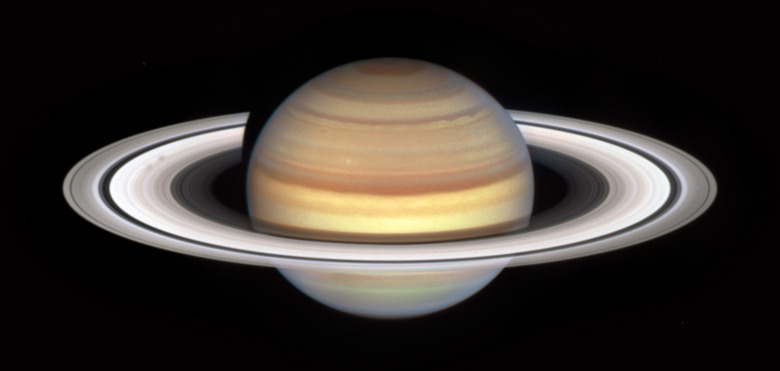Saturn's Rings May Have Come From Two Moons Colliding
A new series of simulations from NASA and Durham and Glasgow universities could help us better understand the origin of Saturn's rings. The research in The Astrophysical Journal suggests that two giant moons colliding could have been the start of Saturn's beautiful and iconic rings.
The two moons that are believed to have collided would likely have been similar to the size of Rhea and Dione, two of Saturn's 145 moons. The researchers say that debris that didn't become caught in the planet's iconic rings could have also acted as the origins of some of the planet's many moons.
The research was headed using data and measurements taken of Saturn by NASA's Cassini spacecraft, which spent 13 years studying the planet and its systems after entering orbit around Saturn in 2004. Now, almost 20 years later, we're finally learning more about the origins of Saturn's rings.
The data captured by Cassini is precise, something it was able to capture by passing through the gap between the planet's rings and the surface of the planet itself. The spacecraft discovered that the almost pure ice within Saturn's rings has collected very little dust pollution since the rings formed, which suggests they formed during the most recent "few percenter of the life of the Solar System," a statement explains.
After learning more about the ring's young age, the researchers involved began utilizing the COSMA machine, which Durham University hosts. This allowed the team to model different collisions and simulations to see what they might have looked like. It additionally gave us more information about the origins of Saturn's rings, providing a great way to look at how those collisions could have formed them.
It's a really startling and impressive discovery that will undoubtedly draw even more astronomers into the fray as they try to dig deeper into the planet's origins and how its rings came to be.
